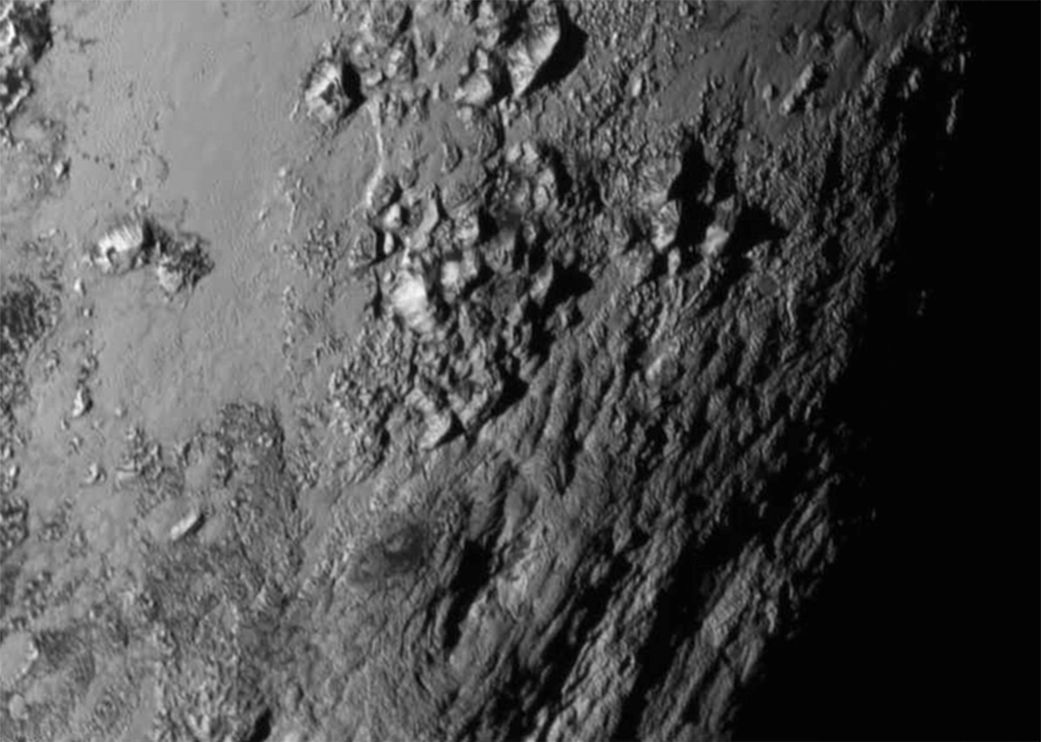
Scientists may have solved one of the mysteries of pluto's subsurface ocean
- Select a language for the TTS:
- UK English Female
- UK English Male
- US English Female
- US English Male
- Australian Female
- Australian Male
- Language selected: (auto detect) - EN
Play all audios:

Scientists may have solved the mystery of how Pluto maintains a subsurface ocean, casting new light on why similar bodies of liquid may persist on other icy worlds throughout the solar
system and beyond. In 2015, NASA's New Horizons spacecraft made observations of Pluto and identified a basin 1,000 kilometers (621 miles) wide and dubbed Sputnik Planitia, which
indicated the likely presence of a subsurface ocean below an ice shell of varying thickness. These observations have proved to be somewhat problematic for scientists. To maintain an ocean,
Pluto would require some sort of mechanism to retain heat inside—such as a thick, insulating layer of ice—to prevent the liquid from freezing. However, to maintain the large variations in
the thickness of its ice shell—as observed by New Horizons—the shell needs to be cold. If the ice shell is too warm, its viscosity would be low, eliminating the contrasts in thickness that
are seen in different regions of the minor planet. Now, though, a team of Japanese scientists say they have found a potential solution to this conundrum. In a study published by the journal
_Nature Geoscience_, the researchers propose that a thin layer of ice containing trapped gas molecules at the bottom of the ice shell could insulate the ocean and shell from each other. This
layer is composed of what the authors describe as gas hydrates—molecules of gas in a lattice of water ice molecules. By calculating how Pluto's temperature and ice shell thickness
would have changed over time with such a layer, the team concluded that the gas hydrates would be sufficient to maintain both a subsurface ocean and thickness variation in the ice. "We
show that the presence of a thin layer of gas hydrates at the base of the ice shell can explain both the long-term survival of the ocean and the maintenance of shell thickness
contrasts," the authors wrote in the study. "[Gas] hydrates act as a thermal insulator, preventing the ocean from completely freezing while keeping the ice shell cold and
immobile." The researchers suggest that the gas in the hydrate layer is most probably methane, which could have originated from the comet-like material that formed Pluto, chemical
reactions in the minor planet's rocky core or a combination of both. These results have important implications for our understanding of how other worlds maintain subsurface oceans, the
authors say. "The formation of a thin [gas] hydrate layer cap to a subsurface ocean may be an important generic mechanism to maintain long-lived subsurface oceans in relatively large
but minimally heated icy satellites and Kuiper belt objects," the authors wrote. "Liquid water oceans are thought to exist inside icy satellites of gas giants such as Europa and
Enceladus and the icy dwarf planet Pluto," they said. "Understanding the survival of subsurface oceans is of fundamental importance not only to planetary science but also to
astrobiology."
